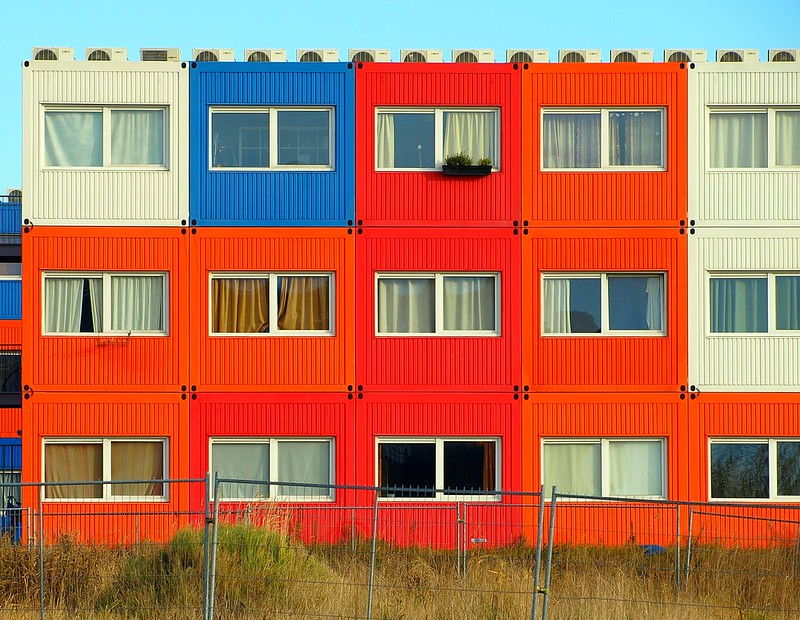 When you order something online, it is shipped across the ocean in vast 20 or 40-foot steel shipping containers before it is loaded on a truck and sent to your house.
When you order something online, it is shipped across the ocean in vast 20 or 40-foot steel shipping containers before it is loaded on a truck and sent to your house.
Surprisingly, these drab shipping containers have another, more creative use!
Over the past couple of decades, architects have been converting them into durable, affordable, and possibly sustainable buildings.
Shipping Container Buildings: Pros and Cons
Shipping container buildings started popping up in the 1980s, about a couple of decades after shipping containers were first invented–and it is clear why.
With their steel frame and corrugated steel walls, shipping containers are often stronger than even traditional prefabricated buildings, making them durable and weather-resistant. They are used as offices, military facilities, and even public spaces like libraries and theaters.
 Because their original function is transportation, they are portable and easy to send to construction sites. Moreover, because millions of shipping containers are sitting idle at ports around the world, they are easily available, making them much more affordable alternatives to conventionally built projects.
Because their original function is transportation, they are portable and easy to send to construction sites. Moreover, because millions of shipping containers are sitting idle at ports around the world, they are easily available, making them much more affordable alternatives to conventionally built projects.
This attribute is a large reason why they have gained popularity in low-income communities. For example, the Monarch Village in Kansas took advantage of their low cost to provide housing for those unhoused during the Covid-19 pandemic. In Johannesburg, South Africa, 140 containers were used to create an aesthetic and affordable housing complex of studio apartments.
Though container buildings can include most features of conventional buildings, there are challenges as well. It may be difficult to incorporate systems like electricity and plumbing as they will need to be customized. Container buildings can also be difficult to insulate, which can increase heating and cooling costs and emissions.
Sustainability: Pros and Cons
Shipping container buildings have the potential to be sustainable. By repurposing unused containers around the world, they are given a second life instead of being sent to landfills.
 They are more sustainable than traditional materials like concrete and brick, especially with concrete being the world’s third-largest carbon dioxide emitter. Container buildings require fewer materials to build. They do not require as many repairs during their lifetime once they are given rust-prevention treatment during construction.
They are more sustainable than traditional materials like concrete and brick, especially with concrete being the world’s third-largest carbon dioxide emitter. Container buildings require fewer materials to build. They do not require as many repairs during their lifetime once they are given rust-prevention treatment during construction.
Unfortunately, most shipping container buildings today are not built with repurposed containers, but new or nearly new ones! This is because the difference in cost between an old container and a new one isn’t significant and old containers are likely to have rust or dents.
This defeats the goal of sustainability -- of saving unused containers from going to landfills. This, combined with the extra energy required to regulate their temperature due to poor insulation offsets the benefits. According to critics, the most environmentally friendly solution currently is to just recycle unused shipping containers for steel.
Though shipping container buildings may not be the perfect sustainable solution, they are still useful in other ways. Their affordability and strength can provide temporary solutions for low-income communities, and they can be an outlet for creativity and a great art piece.
Sources: NPR, e-architect.com, designboom.com, homecrux.com






